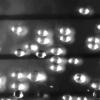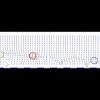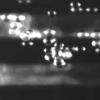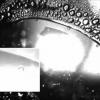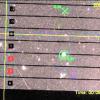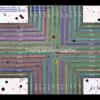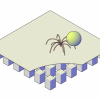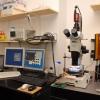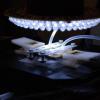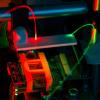Distributed feedback micromanipulation by shaping electric field (dielectrophoresis)
We study the problem of noncontact planar micromanipulation by shaping a force field which derives from an electric field. The electric field is shaped by controlling voltages applied to the array of (micro-)electrodes. Objects located in the field then move in response to the electric field. In particular, even when the particle(s) located in the electric field are uncharged, they can still "feel" a net force as an outcome of their polarization and subsequent interaction of their dipole (quadrupole, octopole, ...) with the surounding electric field. This phenomenon is called dielectrophoresis. It can be used to steer (but also characterize and sort) objects as delicate as cells, hence its appeal for fields such as biochemistry and bioanalytical instrumentation.
From the control systems perspective, the essence of the problem is that the force exerted on a single object to be manipulated (or just a few objects to be manipulated in parallel but independently) must be composed of partial contributions of each individual (micro-)electrode which form the array. The "influence" of each electrode overlaps with its nearest neigbors but decays rapidly with the distance from the electrode.
Since in dielectrophoresis it is the nonhomogeneity of the electric field which induces the motion, this nonhomogeneity can be achieved in two ways. Either by modulating the magnitude of the electric field or by modulating the phase of the (AC) electric field. Whereas the former has been explored and documented in the literature, we focus on exploiting the latter in our research.
With our experimental platforms we not only conduct an academic research targetted at publishing top papers but we also actively participate at diverse competitions. With our dielectrophoresis-based micromanipulation platform we participated twice at IEEE RAS Mobile Robotics Challenge: in 2012 we ranked 4th, and in 2013 we ranked 5th in the tough competition with microrobotics teams from top world institutions.
Our research is currently funded by Grant Agency of Czech Republic within a prestigious (Czech) national Centre of Excellence of basic research type of project, namely Center for Advanced Biotechnologies (BioCentEx). Within the project we collaborate with Dr. Frantisek Foret's bioanalytical instrumentation group.
See also the description of the related experimental platform for distributed manipulation by shaping magnetic field - MagMan.



